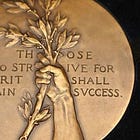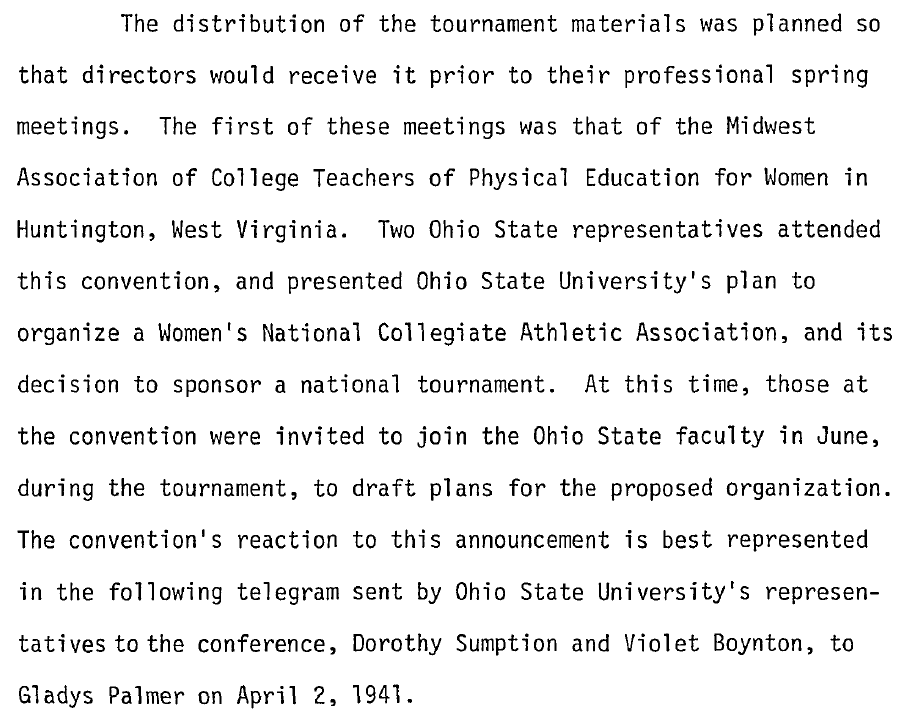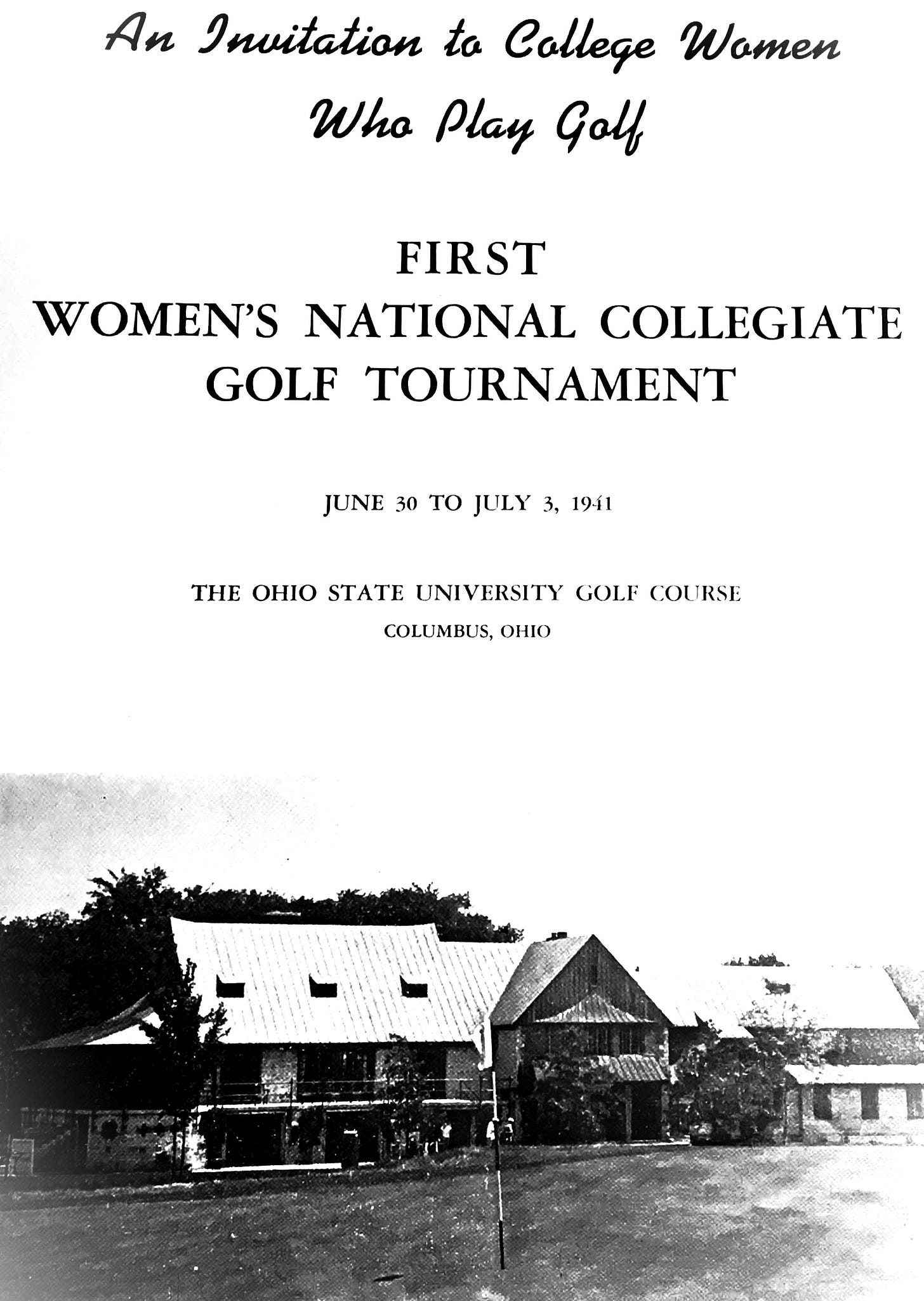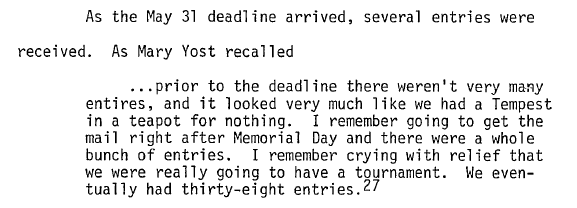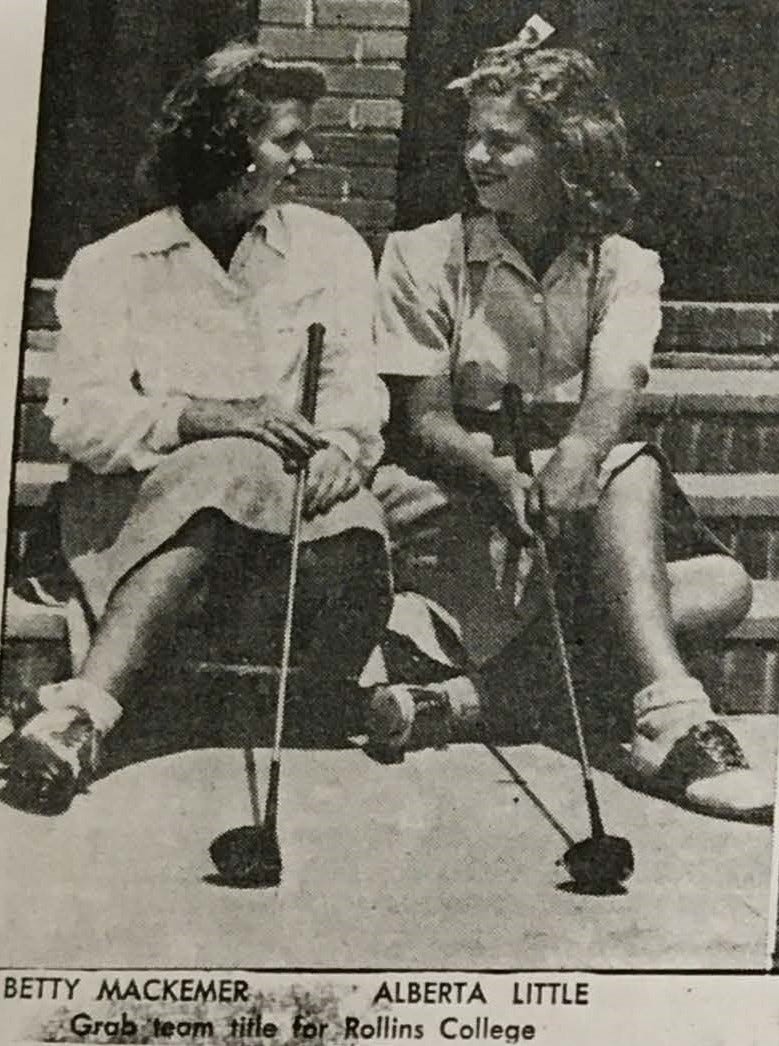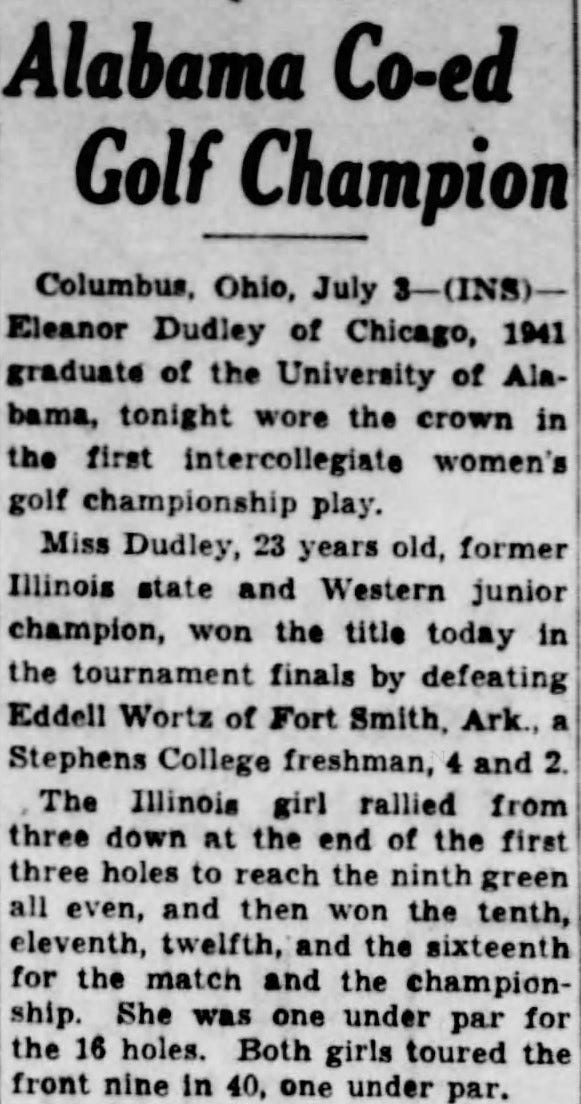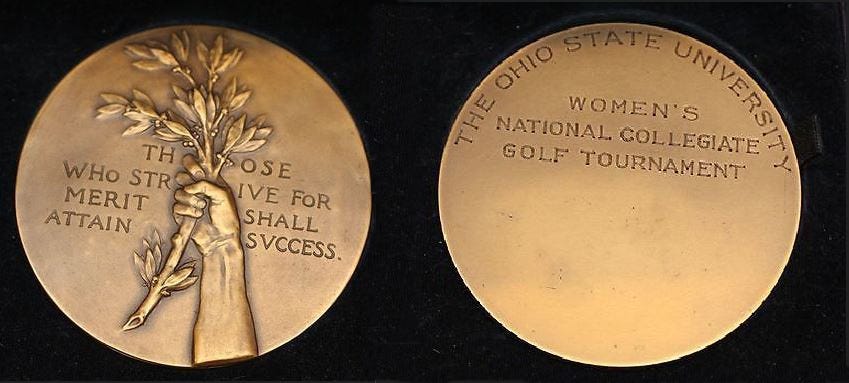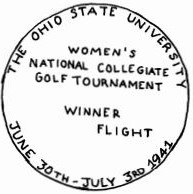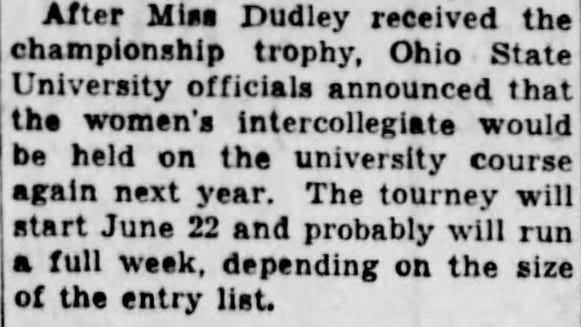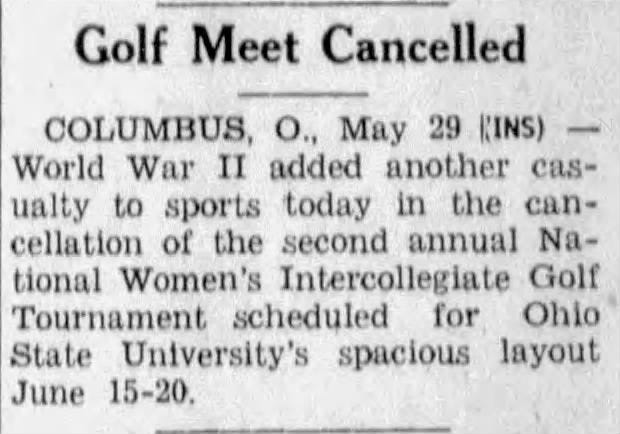This is part of a series on the Women’s Collegiate Championships
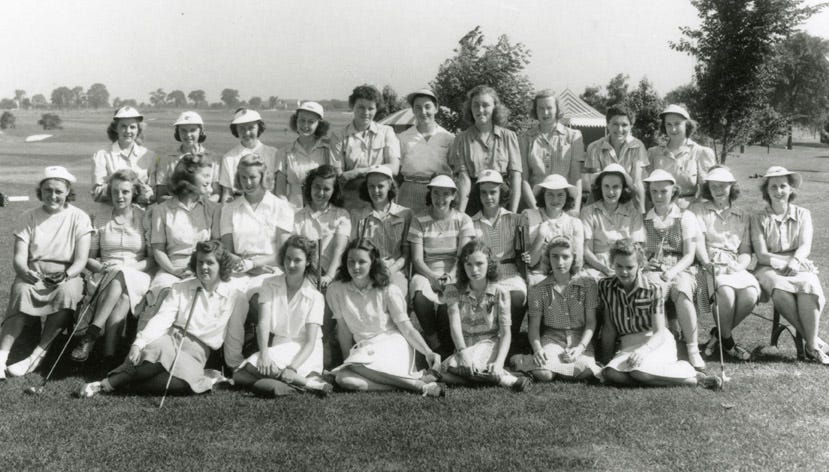
The Women’s Intercollegiate Golf Championship played in July, 1941 marked a pivotal point in the history of not only women’s golf but also women’s athletics in general. Sitting on the precipice of a Second World War, the Ohio State physical education department took a chance in organizing a collegiate women’s athletic competition that flew directly in the face of the “play for the sake of play” attitude that had been instilled following the First World War. For Gladys Palmer, Mary Yost, and the rest of the staff who had their eyes set on creating a new Women’s National Collegiate Athletic Association, golf was a vehicle for something much greater. This is the story of the tournament meant to endure long after the final putt dropped.
*NOTE 1: underlined text provides a link to references or sites with more information
*NOTE 2: we have done our best to cull out sources that contain problematic language or sentiments, but sometimes those things cannot be helped or are otherwise included to illustrate a point; we hope you understand this usage and recognize its educational purpose is not an endorsement
THE LEADUP
The first women’s intercollegiate golf tournament was a long time in the making, requiring equal parts happenstance and perseverance. We will cover the broad strokes below, but for a more detailed look at the unlikely sequence of events that brought both the men’s and women’s collegiate golf championships to The Ohio State University Golf Course in 1941, see our earlier post:
OHIO STATE STAFF PUSHES FOR WOMEN’S ATHLETICS
The following is a short introduction to the members of the Ohio State University physical education staff who played a crucial role in the development of the women’s intercollegiate golf tournament
Gladys E Palmer - Directly from her Ohio State bio: “Gladys Palmer was a trailblazer in women’s athletics, pioneering the first national championship for all of women’s collegiate sports. In the 1940s, Palmer was the chairwoman of the women’s division of the Physical Education Department at OSU.” If there was such a title as “Mrs. College Golf”, Gladys would surely have earned the moniker.
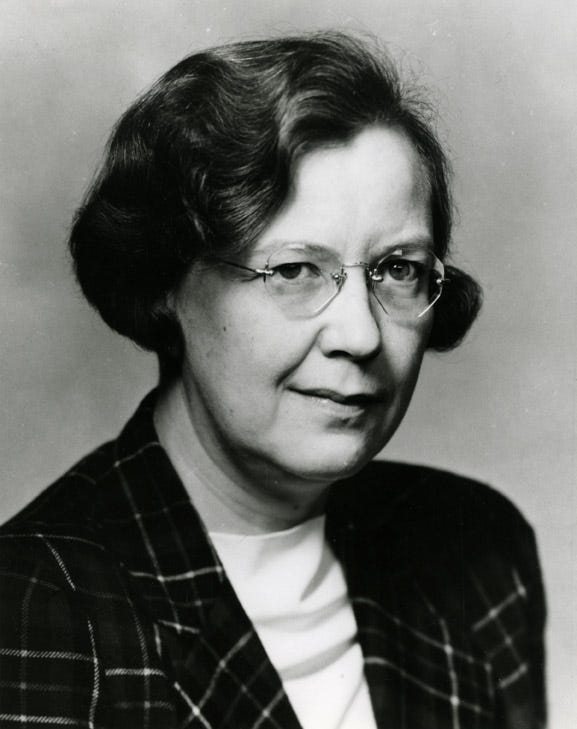
Mary Yost - Instructor in the Ohio State Physical Education department and later professor whose recollections and saved materials were crucial primary resources for a number of dissertations on the topic of early women’s intercollegiate sports. Mrs. Yost was responsible for a number of the practical aspects of the tournament organization as well as a hypothetical “Women’s NCAA” to govern women’s athletics in general.
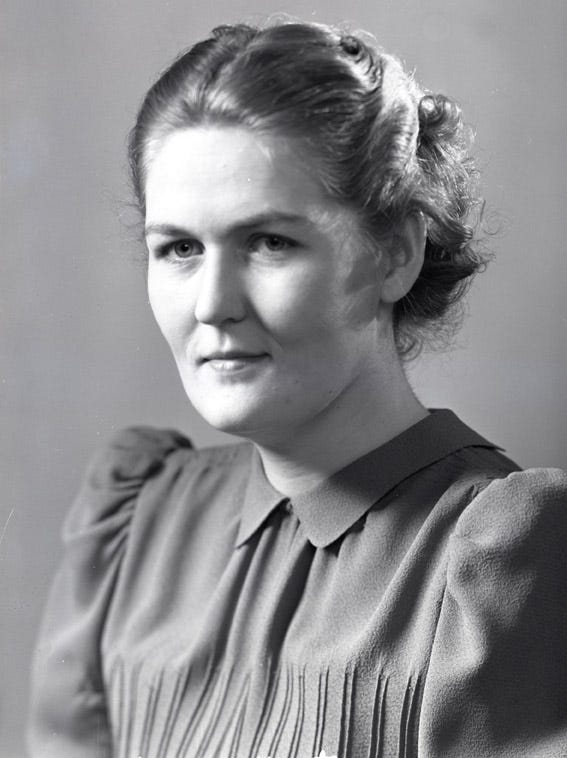
Lynn Wilbur St. John - After a distinguished coaching career in football, basketball, and baseball in the early 1920s, “The Saint” became the athletic director at Ohio State. He was an instrumental proponent for the work that Palmer, Yost, and a number of other staffers did in advancing things to the point where the golf tournament - and subsequent women’s athletics - made the leap from an argument in letters to college physical education departments across the country to being realized.
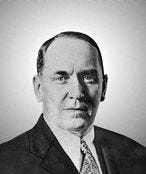
DIVISING A GOLF TOURNAMENT
The Ohio State physical education staff felt very strongly that highly-skilled female athletes deserved an opportunity to showcase and hone their skills in actual competitions. Beginning in late 1939-early 1940, they took a number of practical steps that ultimately resulted in the creation of a national collegiate women’s golf tournament.

It’s important to note that not only were they setting out to create a competition - golf being the most practical sport to begin with - they also envisioned creating an entire Women’s National Collegiate Athletic Association.
As stated above, the outline for a national organization was devised and ready for other members to join and edit together. Just one problem: there were no other members. The reason a subsequent meeting never took place was because there were no other institutions ready to join. Palmer, Yost, and other Ohio State representatives attended a series of regional and national meetings with colleagues in the various physical education organizations in early 1941, presenting their plans to create a new women’s athletic organization and beginning with a golf competition. Unfortunately, this was...not well received.
THE INVITATIONS GO OUT
In the face of doubt and serious pushback from colleagues across the nation, the Ohio State staff decided to go ahead with plans to host the golf tournament and see what might happen. Thanks to a campaign that involved distributing the tournament package to over 300 campuses, newspaper and golf publication coverage, and good old fashioned word-of-mouth, the news of the women’s golf tournament spread.
As the May 31 deadline loomed, few entry forms had been returned to the Ohio State Tournament Committee. They learned of an unexpected issue with the forms: players were required to get the signature of their college physical education director, however some eligible women were being prevented from playing due to this withheld signature. Wanting more players but also needing confirmation of their eligibility as a college student, the Committee went with the unwanted alternative of accepting the college’s registrar signature instead. Was the decision made too late?
THE TOURNAMENT [June 30 - July 3, 1941]
Much of what makes a golf tournament truly special is all of the extra things outside of the golf itself. Given everything riding on the success of this particular tournament, the tournament committee made sure to pull out all of the stops, including: practice round(s), housing, buses to and from the course, contests on the course, various activities off the course, even a picnic lunch. All of this should have cost each contestant way more than they could have reasonably afforded, and certainly more than their college would have likely paid for them. Beyond just his support of Palmer and Yost in their endeavor to give the tournament life, Athletic Director St. John is credited with helping to make all of these additional niceties possible by absorbing all of the costs above what was covered by the $5 entry fee paid by each of the participants.
STROKE PLAY
Taking after the structure of the men’s event the previous week, the women’s tournament kicked off with the stroke play portion which was used to determine both the team champion and individual match play qualifiers. A total of 30 players representing 20 different colleges teed off on the morning of June 30th, 1941, making history.
INDIVIDUAL RESULTS
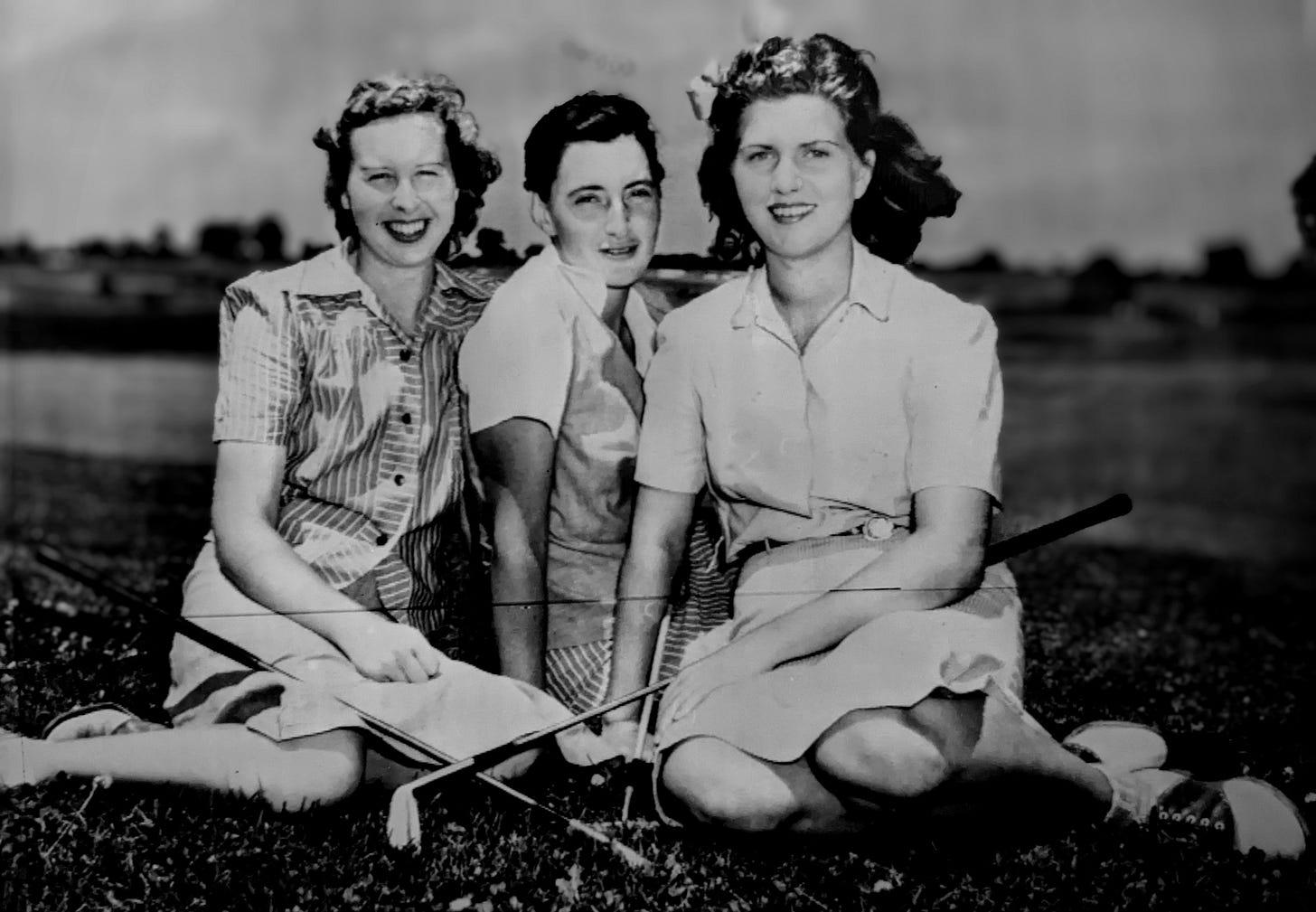
Nobody quite knew what to expect the scores to be in the 18-hole qualifier, but it was thought that the women’s par for the course (80) would probably be safe. Instead, not one but two women broke that mark with a third, Pat Grant from Oklahoma Baptist, coming in right on the number. Alberta Little of Rollins College would have been the talk of the day with her 2-under 78 if it hadn’t been for the incredible play from Michigan State sophomore Marjorie Row. Beating the previous women’s course record by a whopping 8 shots - as well as breaking 80 for the first time in her golfing career - Marjorie collected two eagles and four birdies on her way towards a record shattering five-under par 75 that earned her place in the history books as the first tournament medalist. In total, 16 players bested 90 which qualified them for the championship flight and a chance at the individual title. The remaining players were organized into other flights for the match play portion scheduled to last the next couple of days.
TEAM RESULTS
Despite the relatively high turnout, only a handful of colleges had more than one representative. The team competition was decided by taking the two best scores from players on the same team. Despite Marjorie Row’s record-setting low score, the Michigan State team (163) was narrowly edged out by the Rollins duo of Betty Mackemer and Alberta “B” Little whose combined score of 161 made them the first women’s intercollegiate golf champions. Behind them were Western Reserve (176), Ohio State (183), and Purdue (191).
MATCH PLAY
On July 1st, players returned to the Ohio State course ready for a busy few days of match play golf. Those who lost their matches in the championship flight were reorganized into a consolation bracket so that everyone could continue playing throughout the remainder of the tournament.
Eleanor Dudley, an outgoing senior at the University of Alabama, came into the tournament as one of the favorites. Dudley was a Chicago native who had already appeared in a number of national women’s events and was making a name for herself with long drives and bold play. Her 82 in the qualifying stroke play round proved to be disappointing given the other scores, but considering 4 of those strokes came from errant drives out of bounds on the closing hole, there was easy room for improvement. She showed true form in the match play portion, cruising to the championship match. Her opponent, Eddell Wortz of Stephen’s College, was not as well known, but had more than earned her chance at the title after taking down medalist Marjorie Row in the semifinals.
The Finals match was a true spectacle. Along with a substantial gallery bolstered by players and various college officials, the match also featured a celebrity “official” - none other than Patty Berg who had helped make the tournament a reality! Wortz got out to a dizzying start by winning the first three holes to stun Dudley, however the Bama star won the next three to even it up. They remained even at the turn and it truly appeared to be anyone’s championship. Dudley caught fire on the back by going birdie, par, birdie to win the 10th-12th holes. They came to the 16th hole with Dudley only needing a half to win the title.
The 16th was a perfect example of how Miss Dudley outhit the Stephens College star. It’s a 325-yard par four and a dog-leg to the left. Miss Dudley negotiated the trees and drove straight across the dog-leg to lie on the edge of the green while Miss Wortz was forced to go the long way around.
-(Ohio Citizen, July 1941)
Eleanor Dudley won the individual title while Betty Mackemer defeated her Rollins teammate Alberta Little in the consolation bracket.
“I want to thank everybody for coming to this tournament. I think it is something that will start history. It will encourage golf in the classes in college. This tournament has been carried out beautifully. I congratulate the staff of the University here on their first tournament and I hope they will keep it up.”
Eleanor Dudley, closing remarks
THE AWARDS
Although the Ohio State staff disagreed with the national stance towards on women’s collegiate athletics, they did agree with an intentional de-emphasis on the awards themselves. Even with that being the case, the tournament committee thought it would be embarrassing to have a national tournament without awards so they took the opposite approach. Medals were presented for every conceivable winner - the winning team, the stroke play medalist, and the winner of every match play flight - all engraved with the phrase “Those who strive for merit shall attain success.”
There is mention of a trophy awarded to Eleanor Dudley for her victory in the championship flight, however the transcript of the closing ceremony indicates this likely was more a figure of speech. In her closing remarks, Gladys Palmer laid out her vision for a bright future etched into a fitting vessel
“The other thing I have in mind, having discussed this somewhat with my superior officers in the university administration, is that we are going to establish a permanent trophy for the Women’s Intercollegiate tournament, which will go down through the ages and on which we will inscribe the name of Miss Eleanor Dudley. It will be known as The Ohio State University Trophy for College Women. Each year we will have a small replica of that trophy made.”
THE AFTERMATH
By all accounts the women’s intercollegiate golf tournament was about as successful as the Ohio State staff had hoped. Plans were immediately made for the following year with Ohio State again acting as host.
Looking beyond just the next year, Gladys Palmer’s closing remarks were hopeful for a continued tournament that would grow in size and importance, yet she could see the one thing that would derail the progress being made:
So the Ohio State University Trophy for College Women is now established and the date for the Second Annual College Women’s Golf Tournament is set for the week of June 22, 1942 on this course. The only thing that would interfere with the date would be should our country be at war. During the last war, for two years neither the men nor the women played in tournaments in the U.S.G.A.
Indeed, just six months later the United States was dragged into that very war and by the following June the tournament had been cancelled as predicted. The women competing in that first championship never did get their shot at a second as it wasn’t until after WWII ended that the next Women’s Intercollegiate Golf Championship would be held.
Thanks for reading!
Up Next: The Second Championship (1946)
In the next post for this series we will cover the second Women’s Intercollegiate Championship which returns at the conclusion of WWII.




